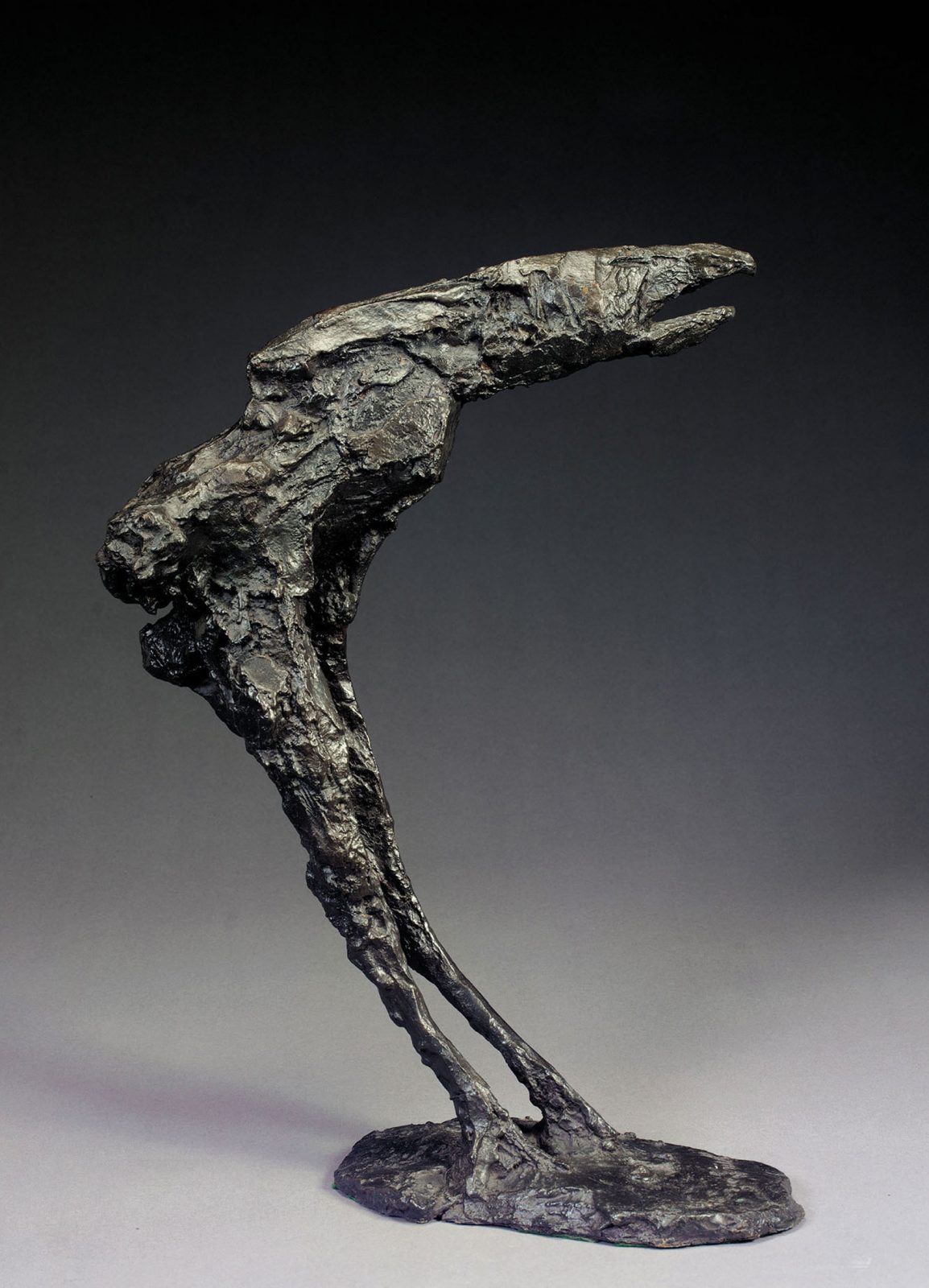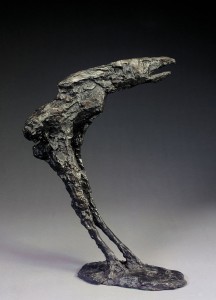The Diamond Jubilee is glorified in an exhibition from the outstanding Ingram Collection, showcasing some of the finest examples of modern British art, at the Lightbox gallery.
The Lightbox gallery and museum in Woking is set to celebrate HM The Queen’s Diamond jubilee with an exhibition from The Ingram Collection that explores significant advances in modern British art during the 1950s, when The Queen came to the throne.
The Ingram Collection: A Diamond Jubilee Exhibition is drawn from an outstanding private collection of modern British art on loan to The Lightbox from media entrepreneur Chris Ingram. The collection, made up of over 350 works, represents an exemplary showcase of some of the finest examples of works by British artists, with particular reference to the post-war period.
The latter half of the 19th century and the first half of the 20th century was an era of rapid change across the social, political, cultural and technological landscapes. This resulted in a questioning of the very purpose of art, which led artists to experiment with media, technique and subject matter. From the First World War in 1914, to the dropping of the atomic bombs on Hiroshima and Nagasaki and the end of the Second World War in 1945, people had endured far-reaching conflict and a great collective suffering. Certainty and continuity were replaced by a sense of the transient and the temporary.
1950s Britain saw living standards rise with the end of rationing in 1954; the development of television brought about a revolution in communication and a new-found freedom in post-war Britain inspired the beginning of a shift in class and gender roles.
Following the devastation and unrest of the war years, The Festival of Britain in 1951 was a welcome opportunity to celebrate the best of British art, design and technology, raising awareness not only within Britain but on an international level.
The Arts Council of Great Britain commissioned works for the festival by a number of artists, including Reg Butler, Lynn Chadwick, Barbara Hepworth, Bernard Meadows and Eduardo Paolozzi.One of the key works commissioned for the festival was a mural by Keith Vaughan for the dome of Discovery, on London’s South Bank. Theseus depicts explorers landing on new territory with a central figure holding up a beacon that spreads lights across the land, reflecting the optimism of the time. The futuristic Dome of Discovery was the focal point of the festival.
A change of government in 1952 resulted in the clearing of the festival site on the South Bank, despite success in visitor numbers, and the Dome, which was only open for a few months, along with the mural, were destroyed. Fortunately, Vaughan created a large-scale study of the mural, which visitors will be able to see at The Lightbox.
The Festival of Britain also provided an opportunity for artists to create new works and reach wider audiences. The St Ives group of artists received many commissions for the festival. St Ives has been a magnet to artists since the early 19th century. After the Second World War it became a centre for modern and abstract developments in British art, led by Ben Nicholson and Barbara Hepworth. Alongside Nicholson and Henry Moore, Hepworth is considered to be one of the most important figures in abstract art in Britian.
An exemplar of the St Ives school is a later 1965 work, Construction I, which features in the exhibition. It’s broad arching washes of blue, brown and yellow are overlaid with interlocking lines and two converging circles that convey a combination of the abstract architectural approach, the colours, reminiscent of the Cornish coast and the influences of the European avant-garde.
In 1952 the eyes of the world once again turned to Britain as The Queen ascended to the throne. At the same time a group of young British sculptors was also attracting international attention at the Venice Biennale. The British Pavilion exhibition at the Venice Biennale of 1952 was curated by, amongst others, Herbert Read. Read was one of the most prominent supporters of modern art in Britain at the time. He was widely considered to be one of the finest curators and art writers of his generation and selected works by sculptors, for what would become the New Aspects of British Sculpture exhibition. A large sculpture by Henry Moore was selected by Read to be placed outside the British Pavilion. Moore had won the International Sculpture Prize at the Venice Biennale in 1948 and was considered by Read to be the ‘parent’ of the group of young sculptors who had been selected for the show. Those included Eduardo Paolozzi; Lynn Chadwick, Robert Adams, Geoffrey Clarke, Kenneth Armitage, Reg Butler, William Turnbull and Bernard Meadows. In the catalogue for the exhibition Read describes their figures as ‘iron waifs’ whose worked represented a ‘geometry of fear’, a term that has since been used to describe these sculptors.
Read suggested that the ‘geometry of fear’ artists’ uneven and spiky images represented an effort to move away from Moore’s smooth sculpted forms. While Meadows experimented with animal imagery other sculptors, including Butler and Paolozzi, experimented with machine-like forms and the lure of mass culture. Whilst the term ‘geometry of fear’ has been questioned by some, it is likely that their work at the time was in part influenced by deprivation in post-war Britaian and the threat of nuclear war in the 1950s. A number of these young sculptors had begun to make critical waves in Britain but the show helped to catapult them onto the international scene. Alfred Barr, director of the Museum of Modern Art in New York wrote: “It was the group of young sculptors that provided the greatest surprise of the whole Biennale.” Many of these artists were also teachers and their influence can be seen in the works of the British and international artists from the 1950s to present day.
The Coronation year also marked the establishment of the Independent Group, a revolutionary group of young painters, sculptors, architects and critics who held meetings at the Institute of Contemporary Arts, London. The Independent Group challenged the Kitchen Sink Movement, which depicted the austerity of the lives of the working class in post-war Britain and focused on positive developments instead. One of the developments the group was particularly interested in was the advancement in mass culture and media and its place within art. Artists including Eduardo Paolozzi, Richard Hamilton and John McHale were among the visual artists in the group, who are credited with initiating the Pop Art movement and whose ideas and work were instrumental for the direction of British art in the 1950s and 60s. In simple terms the group was looking at the world around them and drawing inspiration from everyday objects.
One artist in particular, Eduardo Paolozzi, was leading the way in terms of absorbing mass consumerism and challenging notions of fame and celebrity with his art. Paolozzi’s Children of the Night is one of several key collage works in The Ingram Collection and features in the exhibition. In Children of the Night and Au Telephone Paolozzi introduced vertical and horizontal cut lines through the celebrity and consumerist advertisements by ‘fighting the image’ in this way Paolozzi cleverly animated, through the cut-and-paste technique, what might otherwise have been smug or cosmeticised faces.
Britain’s influence on the international art world was also felt during the design competition for the Monument to the Unknown Political Prisoner, which opened in 1952. Reg Butler won the main prize, beating 3,500 other applicants, including entries by Barbara Hepworth and Eduardo Paolozzi. The idea of a public monument to millions of people’s private pain understandably caused a huge amount of upset, and a number of horrified MPs signed a petition against it At the same time British newspapers ran cartoons mocking Butler and the project was unrealised due to practical as well as political problems. In this context, however, the competition did reflect Britain’s growing influence on the international art scene. British artists submitted more than 500 of the 3,500 entries and Butler, Hepworth and Chadwick all received prizes.
The Ingram Collection: A Diamond Jubilee Exhibition will illustrate how a combination of events in the 1950s increased the status of British artists and led to one of the most significant periods in modern British art. The exhibition explores how British artists in the 1950s dealt with and expressed their views of society, culture and the feeling of the period. Additionally it examines how British art not only assimilated and appropriated many lessons from its European and American avant-garde compatriots but also inspired the British art movements, schools and groups in the latter half of the 20th century, as well as reaffirming Britain’s status on the art-world map.
Article courtesy of Art of England Magazine (May 2012)


